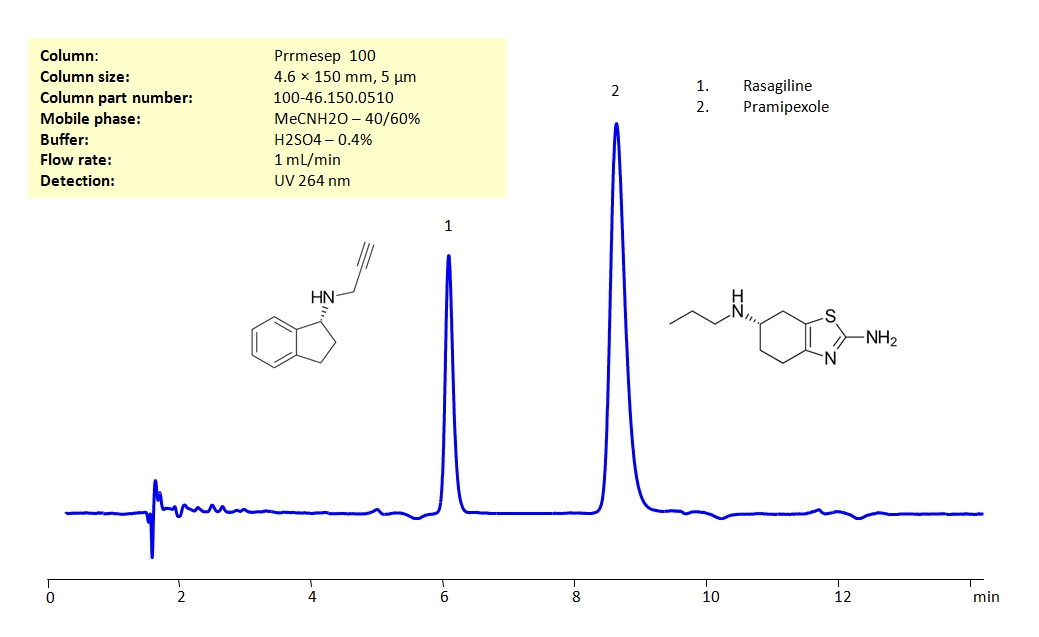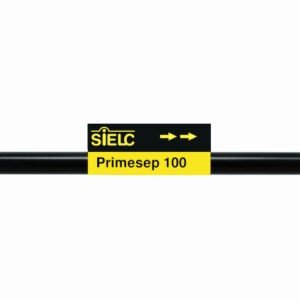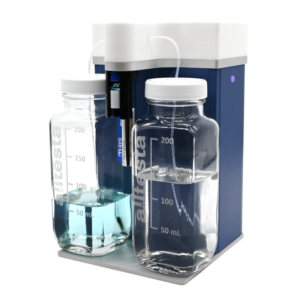Separation type: Liquid Chromatography Mixed-mode
High Performance Liquid Chromatography (HPLC) Method for Analysis of Rasagiline and Pramipexole
Rasagiline and Pramipexole are marvels of modern science, giving patients with Parkin’s disease a way to treat their symptoms. Interestingly, both work slightly differently. Rasagiline prevents dopamine metabolism by permanently binding to the enzyme that breaks down dopamine, monoamine oxidase-B (MOA-B), while pramipexole binds to dopamine receptors and activates them, mimicking dopamine itself.
These drugs can be detected in the low UV regime. Using a Primesep 100 reverse-phase column and a mobile phase consisting of water and acetonitrile (MeCN) with a sulfuric acid (H2SO4) buffer, Rasagiline and Pramipexole can be separated, measured, and analyzed. This analysis method can be UV detected at 264 nm.
| Column | Primesep 100, 4.6×150 mm, 5 µm, 100A |
| Mobile Phase | MeCN/H2O – 40/60% |
| Buffer | H2SO4 – 0.4% |
| Flow Rate | 1.0 ml/min |
| Detection | UV, 264 nm |
| Class of Compounds |
Drug |
| Analyzing Compounds | Rasagiline, Pramipexole |
Application Column
Primesep 100
The Primesep family of mixed-mode columns offers a wide variety of stationary phases, boasting unprecedented selectivity in the separation of a broad array of chemical compounds across multiple applications. Corresponding Primesep guard columns, available with all stationary phases, do not require holders. SIELC provides a method development service available to all customers. Inquire about our specially-tailored custom LC-phases for specific separations.
Select optionsRasagiline






